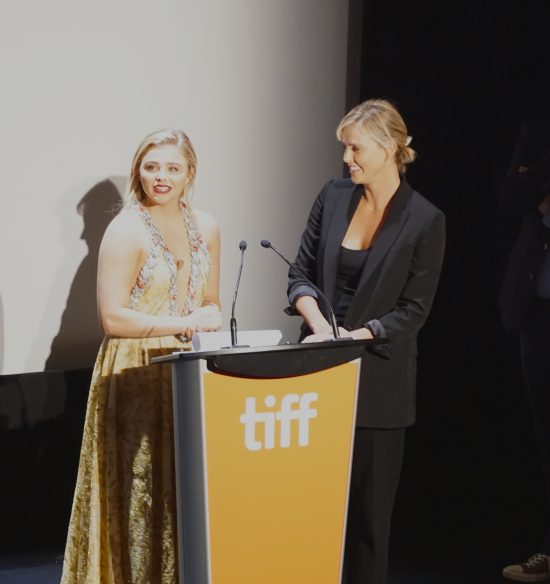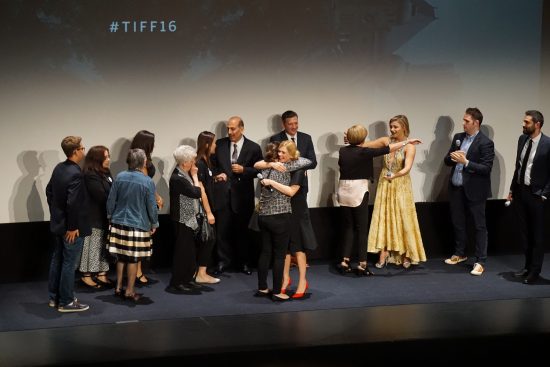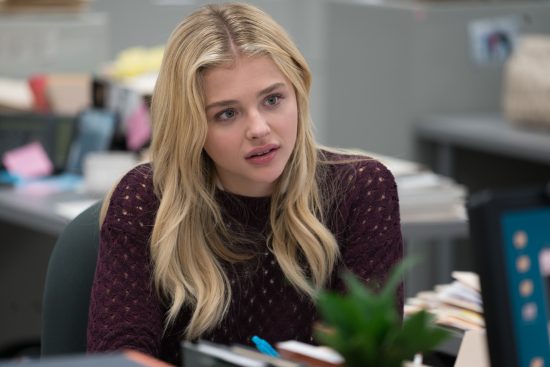Interview with Rob Merilees, Producer of Brain on Fire
Making a film is wrought with all sorts of challenges. The director might need to get that particular shot before the sun goes down. An actor might need to delve deep in an emotional scene… and then do it over and over until they get just the right take. The crew might have one chance to get that huge explosive effect just right. But many of the challenges of filmmaking happen even before the camera starts rolling, and fall on the shoulder of the producer, without whom the movie wouldn’t even get off the ground. One such producer is Rob Merilees, whose most recent project, Brain on Fire (read my review), had its world premiere at the Toronto International Film Festival.
While he’s now been in the business about 21 years, Merilees initially worked in the education system and as a restaurant manager before his involvement in a friend’s movie. And that was it. Having been bitten by the movie making bug, he started a company called Infinity Features and went about learning the business. Along with another producer they started making movies. “Each of them showed me how to produce things,” says Merilees, “And the first movie I made sort of on my lonesome was a $10 million Canadian feature that I put together the cash for and did. Charles Martin Smith directed and it was called The Snow Walker.”
They ended up taking that film to the Toronto International Film Festival, among others, and doors started opening. “It became a lot easier for me to get movies made,” he explains. “We had Infinity [Features] for a bunch of years and I think the most notable movie that we made was Capote and the movie called Just Friends. The last one we made with that company was the The Imaginarium of Dr. Parnassus, which was a Terry Gilliam movie where Heath Ledger passed away.” After that last film, Merilees’ business partner Bill Vince unfortunately passed away from cancer. Rob started over, creating Foundation Features which has now been around for eight years.
That company has been involved in both film and television productions, both of which offer their own set of challenges. “Putting feature films together is hard, but it’s not impossible,” Rob says. “Putting scripted dramatic television together involves a lot of people. So there are a lot of voices.” In TV you have a crew of writers and also broadcasters that have a say in what occurs. Merilees goes on to explain, “There are a lot of cooks in television and less so in features. In features, what it really boils down to is the director and the producer. If the producer has a good relationship with the director then usually it works out to be harmonious and synergize.”
His newest production, Brain on Fire, was brought to Merilees by a friend with whom he had produced the 2008 film Sleepwalking. Her name? Charlize Theron. “Working with Charlize is always a blast,” Rob says. He goes on to explain that Sleepwalking, “Had a fairly good cast and it was dramatic, a very dark and depressing movie. But it’s nice that at least the relationship survived and we were able to make another one.” So when Theron read the source material and loved it, she brought it to Merilees and signed over the option. A trip to Sundance and Cannes film festivals secured some financing before the film went into production last year.

Chloe Grace Moretz (L) and producer Charlize Theron (R) at the premiere of Brain on Fire at the Toronto International Film Festival, September 2016
The source material Theron fell in love with is Brain on Fire: My Month of Madness. It is the memoir of New York Post writer Susannah Cahalan which chronicles her struggle with a devastating autoimmune inflammatory brain disease (autoimmune encephalitis). In the film, Susannah is played, in a brave performance, by Chloe Grace Moretz. Thomas Mann, Carrie-Anne Moss, Tyler Perry, Richard Armitage, and Jenny Slate also co-star.
While casting can often bring many challenges, the film’s star, who was the first to be cast, helped to bring the supporting actors together. “Once Chloe was on board, people were jumping on pretty fast,” says Merilees. “We went straight to Thomas Mann because we’d all seen Me, Earl and the Dying Girl and I just loved him,” he continues, “But then it sort of happened quickly after that. Tyler Perry approached us because he had heard of the project and was wanting to do more serious roles like his role in Gone Girl. So he wanted to play the editor which was very lucky for us, because it’s a super big star. I think the hardest one to cast was Carrie-Anne Moss and that was just due to scheduling. She wanted to do the part from the get go, but scheduling, I guess, she was on Jessica Jones television show as well.”
With casting complete, director Gerard Barrett, whom Charlize had found after watching his film Glassland, managed to shoot Brain on Fire in 21 days in both Vancouver and New York. Barrett also adapted the book, writing the screenplay. Fans of the memoir will notice there are some changes to the story, as there are in most adaptations. “I find most people are very aware that sometimes you have to take a few liberties to make it more cinematic,” Rob says when asked about the challenges of adapting a book to screen, “But probably the biggest challenge is most writers don’t want to do that. They want to stay really true to the story and I think most people do want to stay true to the story but sometimes you have embellish and get around in a different way just to make the movie more interesting.”
However it was meeting the author, and survivor, herself, Susannah Cahalan, that really drew Meriless into the project. Listening to her story was even more impactful than the book, and Rob started to realize what exactly this film could mean. He says, “Sometimes you get a chance to make where you can actually do some good and this book had come out and [Susannah] was telling us that the doctors were saying that this book is going to save a lot of lives because the diagnosis will get out there more. People will know about it and it can get properly diagnosed. We’re bringing it to awareness. So I thought well that’s exactly what we’re doing with the movie, but probably more so if we do our jobs well.”

Autoimmune encephalitis survivors with Chloe Grace Moretz, director Gerard Barrett, and author Susannah Cahalan at the world premiere of Brain on Fire at the Toronto International Film Festival, September 2016
Another consequence of doing his job well is being able to bring this film to the Toronto International Film Festival which Rob describes as, “The best film festival for films like this. It’s great because if they like your film, they will build a nice big screening for it and you can hit 2000 people in your theatre.” The people in that theatre this September also got a Q&A session with Moretz as well as Cahalan and her doctor Souhel Najjar. A number of survivors of autoimmune encephalitis were also present, and Merilees says backstage there wasn’t a dry eye to be had (in defence of his masculinity, save for maybe his). Clearly this film already means a lot to so many people, a great result indeed for the already accomplished producer.
As Merilees noted, that relationship between producer and director is ever important, and Rob seems to have found that ‘harmonious’ relationship with friend and director Charles Martin Smith. They are already planning their next project together. Merilees explains, “He’s one of those guys who’ll just listen to anybody and take all the best ideas and make them his own. And he is just so much fun to work with. So we made two movies together, we’re making another one and they’ve been pretty successful.” Rob refers to a true story western about three teenage boys whose father is a white man in Hundson’s bay and their mother an aboriginal woman. Disenfranchised and marginalized by both sides of their heritage, the boys end up on a killing spree trying to organize a rebellion. “It is going to be hard to cast, but it’s going to be a fun one to do,” Merilees says. He is nothing but busy, but as he describes, it’s “fun busy”. Said like a man who has truly found his calling.










